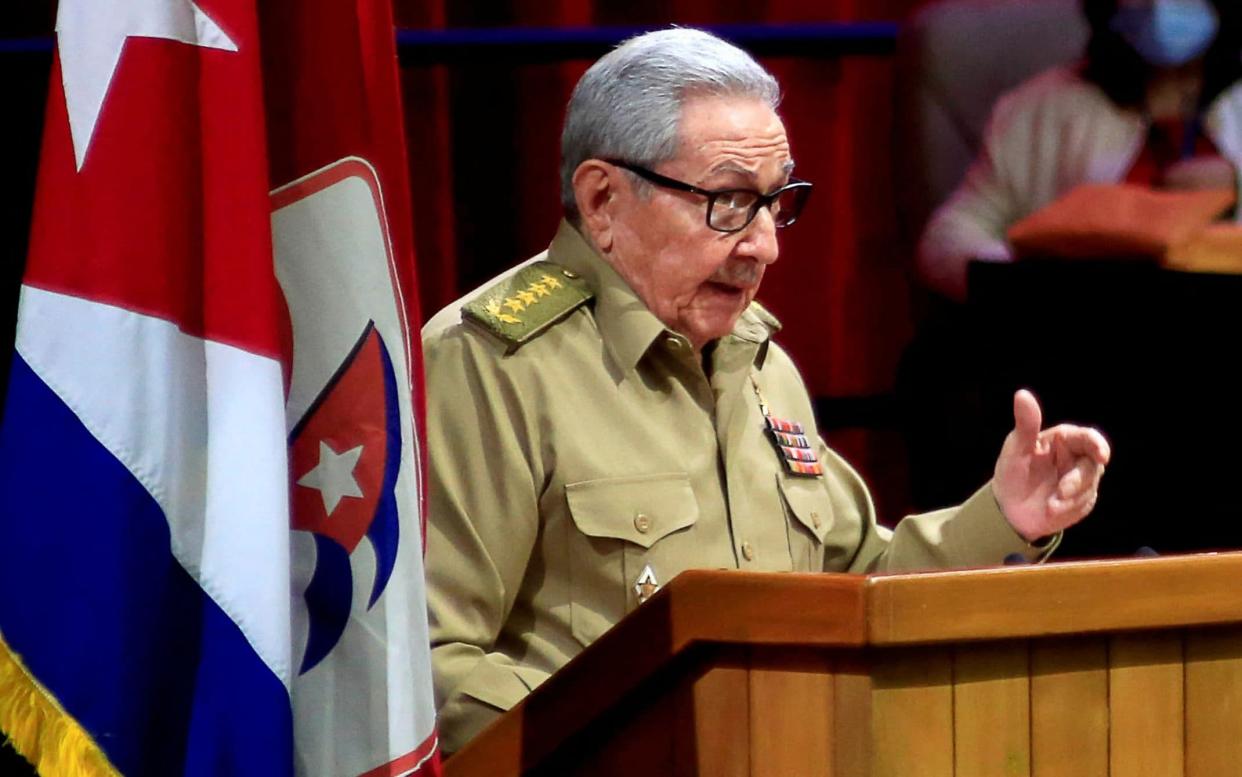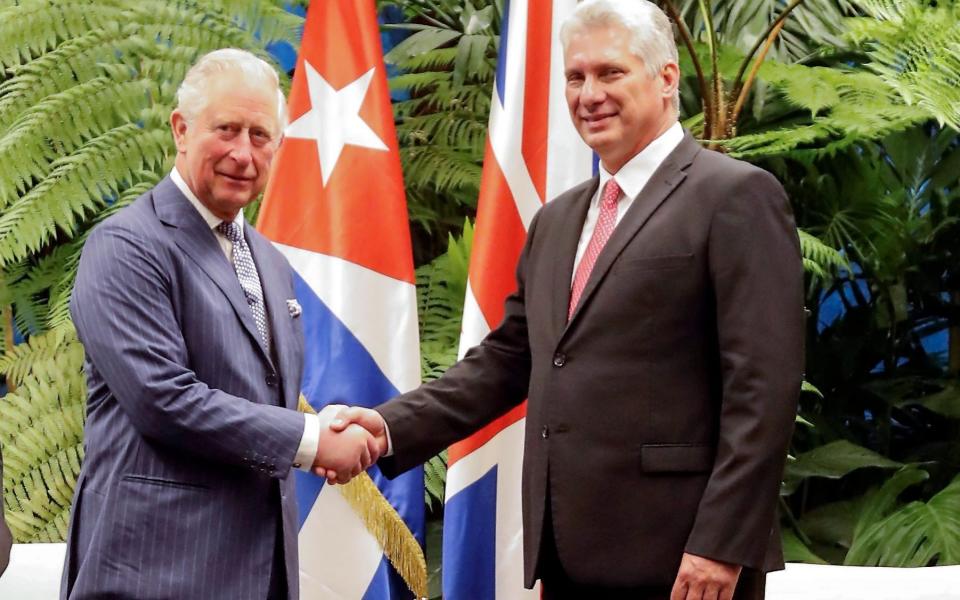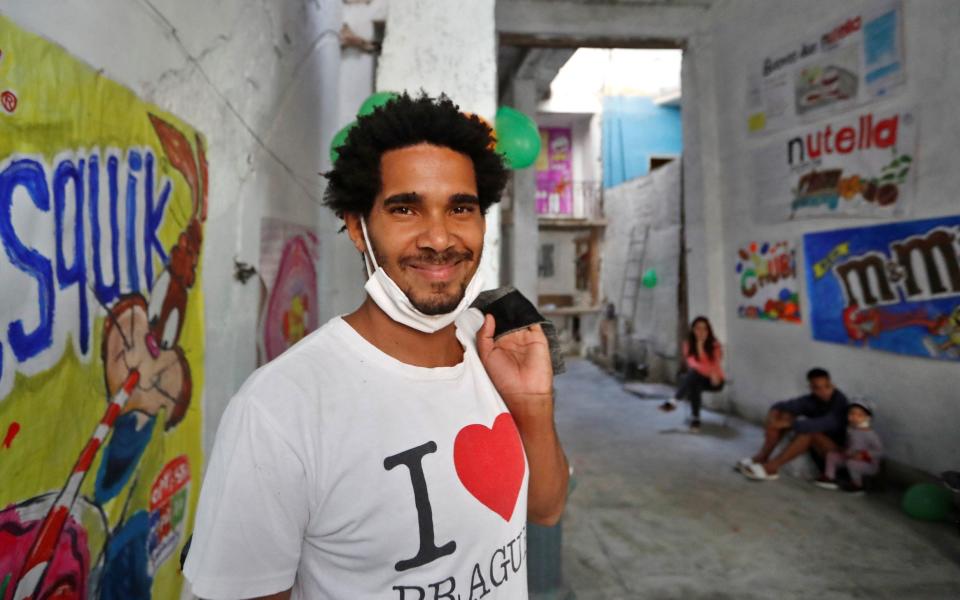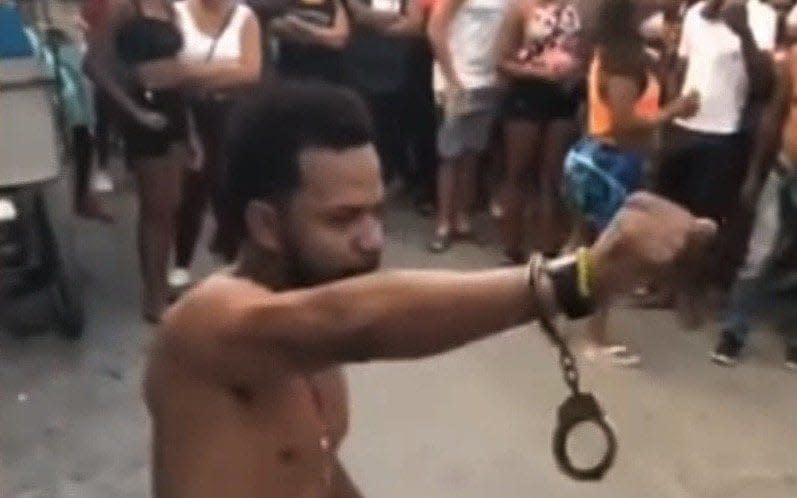Last Castro of Cuba finally steps down as island gripped by most serious bout of protests in years

- Oops!Something went wrong.Please try again later.
For the first time in more than 60 years, a Castro will not be ruling Cuba, with Raúl, brother of Fidel, stepping down as head of the country’s all-powerful Communist Party.
The repressed island nation of 11 million people is at a precarious tipping point, with the economy in tatters and the clamour for personal freedoms growing as more Cubans gain access to the internet.
There have been protests, hunger strikes and even clashes with police as an underground opposition movement has increasingly ventured into the open.
Late on Friday night, the Castro era was broken as 89-year-old Raúl announced his resignation as the first secretary of the Communist Party of Cuba - a position more powerful than that of the President.
He has handed over to Miguel Díaz-Canel, a bicycle-riding, jean-wearing Beatles fan who has previously championed LGBT rights and advocated for a freer society.

As President for the last three years, Mr Díaz-Canel has followed Mr Castro’s lead, but now activists are hoping he can forge his own path.
Cuba is facing a multitude of problems.
Fidel Castro seized power from the US-backed Fulgencio Batista in 1959 and imposed a communist regime on the population until his death in 2016. His younger brother Raúl has been in charge ever since, only gently opening up the country to the Western world in the last two decades.
But Cuba’s economy contracted by 11 per cent last year. The handouts from Venezuela are shrinking, and the queues along the potholed streets for basic goods are growing.
The average salary is around $30 a month, around 17,000 people leave the country for good each year and by 2030, a third of the population will be 60 or over.
The historic standoff with the United States has kept Cuba in a chokehold, loosened partially under Barack Obama but tightened again under Donald Trump.
Now in a global pandemic, coronavirus cases are running at around 1,000 a day, but the country has decided to develop its own vaccine and the population won’t be inoculated until the end of the year. Throughout the dusty back streets of Havana and round the famous, sweeping Malecón, unrest is growing.
“The exit of Raul Castro is an important symbol. This is going to be a radical change,” said Luis Manuel Otero Alcántara, head of the San Isidro Movement - a collective of artists who have been leading protests against the Government’s censorship rules.
“He is the last Castro to take power, one of the last revolutionaries, and now there is a big power vacuum."

The San Isidro Movement sparked into life with the rollout of mobile internet across the country in 2018. Its members include journalists, singers and academics, who share their pictures of their work on Instagram and live stream their arrests on Facebook.
At first they just advocated to be allowed to perform or publish without state approval, but now, they are demanding the end of communist rule and a transition to democracy.
Speaking on a patchy, but secure line from his home in downtown Havana, Mr Alcántara told the Telegraph that he is effectively under house arrest, with cameras trained on his front door and 15 police officers stationed around the block.
He has been to prison many times for his performance art, which often mocks the country’s leadership, and claims he has been beaten up by the authorities.
“I know they could kill me. Franco killed his opponents. I know they could do the same,” he said.
“But I would happily die for this cause. Cuba is waking up to the injustices.
“People cannot get medicine and are dying from things they shouldn’t die from. Buildings collapse because they are not maintained, killing children. Enough is enough.”
A striking image was shared on social media last week.
A rapper called Maykel Osorbo thrust his right hand in the air, fist clenched. Dangling down from his wrist was a pair of handcuffs - one locked on, the other waving free.
He was being arrested by police when a crowd gathered and prevented the officers from detaining him. The police backed away and the street was filled with the sound of his anti-establishment song “Patria y Vida.”
The Telegraph attempted to contact Mr Osorbo, but was told that his phone had been taken away.

As Cuba moves into a new era, there is hope that relations can be built back up with the United States. Bridges were being built by Barack Obama, who visited the island in 2016, but were burned by Donald Trump who imposed fresh sanctions on the regime.
“These problems were not caused by Donald Trump, they were caused by the Cuban government,” says Mr Alcántara.
"They are liars."
Mr Castro is not likely to disappear completely. He is rumoured to have built a retirement compound in Santiago de Cuba, on the country’s southern Caribbean shore.
“I think Díaz-Canel will have a lot of leeway,” Carlos Alzugaray, a former Cuban diplomat based in Havana told the Washington Post.
“But Raúl will still be consulted on issues that are important — especially anything to do with the US.”

